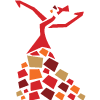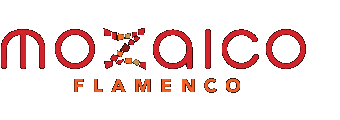Festival de Jerez 2008
By Kasandra “La China”
March 8, 2008

Jerez de la Frontera is the birthplace of flamenco. Geographically it is in Andalucia, the South of Spain, approximately an hour from Seville by car and 40 minutes from Cadiz. It is famous for its Andalucian dancing horses, sherry bodegas and Flamenco! If you are going to Spain on tour, allot 2 days for Jerez to see the Royal Andalucian School of Equestrian Art to see the dancing horses (these horses can dance in 3/4 and 4/4 time), visit a sherry bodega (Domenq and Tio Pepe are the largest) and see some Flamenco!
On the other hand, if you are a flamenco junkie and want to study flamenco here, you could stay for several months. I have been coming to Jerez since 1998. Most of the time it is for the Festival de Jerez, which is a wonderful flamenco festival with nothing but flamenco happening in town for 2 weeks at the end of February to mid-March (usually). I’ve enjoyed my trip here this year. It is always a joy to come here to enjoy flamenco to its fullest and be completely immersed and inundated with it.
Here is a list of things that I will miss about Jerez 2008. I’m not sure I will be back in 2009 because the Flamenco Festival in Albuquerque seems like a good bet!
1. Bulerias Cante classes with Coral and Antonio. Even though I have been here 7 times, this is the first year I have given some attention to cante. HOLYMAC. I must be growing up as a flamenca. About 12 years ago, Oscar told me “Flamenco is all about the cante” and I was a big “whatever”. But now, I get it. I really get it. At this point in my career, regular technique baile classes are a tad boring for me and “not enough” from a cultural standpoint. I love dancing too but if there is no guitarist or singer in the class, I just don’t feel like it’s an integrated enough experience for my liking. Cante has been a challenge, psychologically. Mainly because I’m not much of a singer. I don’t sing in the car or in the shower. When I was 7 years old I quit Kodai classes coz I didn’t like singing much to my mother’s chagrin. Singing bulerias is hard in the beginning, the tonality and also the compas. At this stage, I am just happy to be singing and have no expectation of myself. I guess that’s the main difference. With dancing, I expect to do well whereas with singing, I don’t…in fact, I am laughing my guts out every time the teacher asks me to sing by myself (OHNO…now I know how all my por fiesta students feel dancing in the circle). I’ve had an extremely good laugh at myself and find it really uplifting to be doing cante. To boot, I learned that Antonio de los Rios is the guy that wrote “Noches de Bohmeia”, a song that went platinum by Pele’s group Navajita Platea. Luis and Stephanie and Paco sing this in Vancouver and the crowd always goes nuts. WOW, now I know the genius songwriter!
2. Learning , I have always loved the learning process in flamenco. . I will especially miss input from my teachers and learning new technique and getting new ideas for baile. Sometimes it is hard being the teacher or the choreographer all the time, because you are constantly having to invent and be creative. This is great until one is uninspired. Then one needs to study with other artists. This year, Rafaela Carrasco challenged me with her movement, style and footwork ideas.
Seeing shows every night is a great treat for me. At the Festival de Jerez we have our choice of 7pm, 9pm, midnight and 1am shows. There is no lack of shows, and by the end of 2 weeks, the attendees of the Festival are thoroughly exhausted.
Although I am very critical of what I am seeing, each show and each artist has his/her own interpretation of flamenco and I find this challenging to watch. Sometimes I agree, sometimes I don’t, sometimes I just don’t get it. But I am always intrigued. Mostly I am information gathering.
What makes a good show?
Why does this artist touch me?
Why does this artist make me want to leave?
I love that about flamenco!
3. Bata de Cola with Milagro Mengibar. Bata de cola is relatively new for me. Training intensively since 2006 with Matilde Coral, then coming home to integrate her technique and choreography into my Bata de Cola class has given me some way to train/master her philosophy and technique. I was told to study with Matilde Coral as my first bata teacher, and then later, progress to other masters like Milagro or more contemporary dancers like Belen Maya later. I am really really glad I went through this process because I can see how the bata tradition, how it first began and where it is going now, and how it is evolving. Going into Milagro’s class has been interesting because her turns are sharper, faster, there are more pirouettes, attitudes and other classico and balletic techniques. But then again, she’s more flamenca as well. I have so many awesome new things to be teaching in class when I get back and am really stimulated by these ideas. Choreographically I have a mountain more moves to integrate and WOW, I’m so glad I came.
4. The Art of Loitering. There’s really not much to do here. Jerez is a small town. It closes down on Sundays, holidays and between 2-5pm. So, one learns to loiter over a 3 hour lunch, eat tapas, drink cafe con leche and do things SLOOOOWWWWWLLLLY.
I don’t think Andrew gets it because he’s always in a German rush walking down the street. You can’t do this, you have to saunter, meander, walk around like you’re 250 lbs and it’s too hot to move. Once you master that, you can be a native. There’s no rushing. Nobody eats on the road, carries a Starbucks or eats a Powerbar. If you eat while walking, they just look at you like you’re mad.
5. Afternoon tapas at El Gallo Azul & morning cafe con leche at La Dolce Vita on Calle Larga. We love hanging out on Calle Larga, the main walking street in Jerez. We also love eating multiple tapas at El Gallo Azul in the sunshine in the afternoon. It’s the sunniest place in town to have an afternoon lunch and watch people go by. Tapas can be bought at 2 euro each.
If you are an early riser, get a cafe con leche at La Dolce Vita and watch the morning traffic. They have the best coffee. (Bar al Teatro also has good coffee but it’s in the shade).
6. Postres at La Rosa de Oro. I’ve eaten so many Cortado San Marcos and Chocolate Mousses here, I’ve lost count. Sugar is a food group. Every time I come here, I make it a point to have as many of these desserts from this bakery as possible. It is the only store I really miss when I get back to Vancouver.
7. Spending quality time with old friends and new friends. I always find it amazing how my life in Vancouver gets into this really fast paced groove. I find myself working, rushing around, dancing, teaching, shopping, cleaning, walking the dog, etc. People start to be less of a priority as I bustle about my daily life.
Again, Spain has a way of slowing life down to the point you can actually have a conversation, make some friends and get to know old friends better. There is a lack of “noise” there and life gets boiled down to its basics. I really enjoy this aspect of living in Spain and spending quality time with old friends and new friends. I had a great time with Elvira and Andrew, who have been friends, collaborators, students and community members of Al Mozaico Flamenco Dance Academy for many years. Thanks guys for a great time in Jerez 2008.





Leave a Reply
Want to join the discussion?Feel free to contribute!